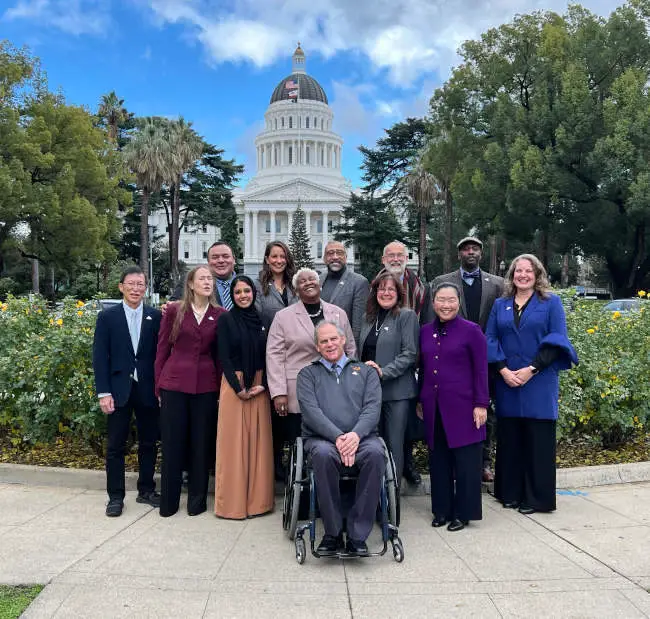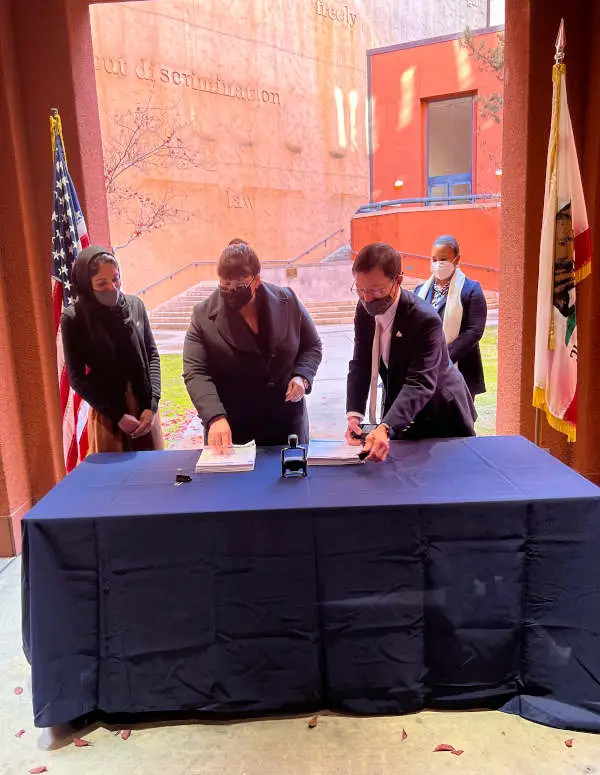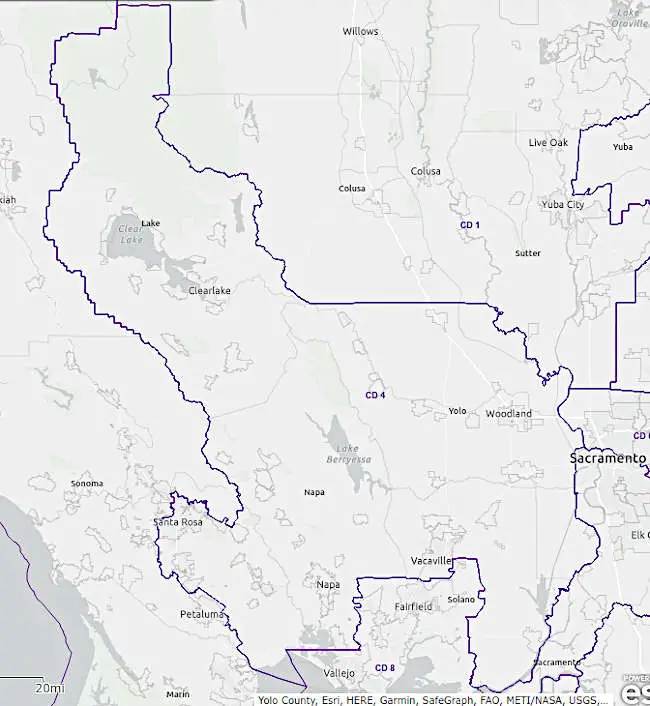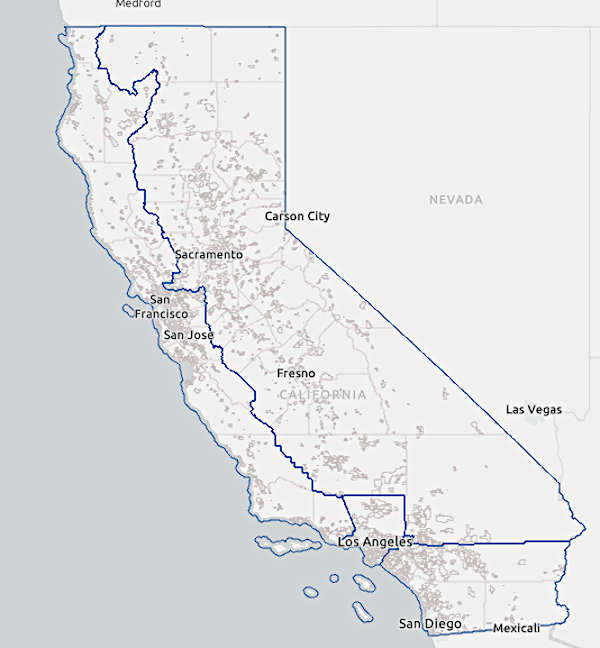
On Monday, the California Citizens Redistricting Commission delivered California’s final congressional, State Senate, Assembly and Board of Equalization district maps to the California Secretary of State, finalizing a process that was impacted by the pandemic and which sought to balance the interests of millions of state residents.
Monday was the deadline set by the California Supreme Court for the commission’s final maps.
“I want to thank the redistricting commissioners for their hard work under challenging circumstances. We will now send these maps to the Legislature and to all 58 counties for implementation,” said California Secretary of State Dr. Shirley N. Weber.
The final maps place Lake County in Congressional District 4, State Senate District 2, Assembly District 4 and Board of Equalization District 2.
Every 10 years, with the completion of a new census, California must redraw electoral district boundaries to ensure the state’s population is even distributed among the new districts.
The 14-member commission — including five Democrats, five Republicans and four members who are unaffiliated — drew four Board of Equalization districts, 52 congressional districts, 40 Senate districts and 80 Assembly districts, which determine how funding and other resources are allocated to communities.

Commission Chair Isra Ahmad said the group represented a variety of personal and professional backgrounds and different parts of the state.
“We drew district maps in an open and transparent manner that did more than merely allow public input — we actively sought and encouraged broad public participation in the process through a massive education and outreach program, afforded to us by the delay in receiving the census data,” said Ahmad, who lives in San Jose.
“Serving on the commission has allowed us to work to expand the circle of opportunity for more and more people across California. Our communities are changing faster than ever. We all worked to ensure that all communities had fair, just and equitable representation. And we did so in a transparent manner, while working hard to engage all communities, especially voices who have been historically excluded. Representation matters, and representation is only truly possible in all communities actively engaged,” said Commissioner Pedro Toledo, who lives in Petaluma.
The commissioners were seated in August 2020 and began months of preparation for their work with meetings, planning, organization, outreach and public education.

On Aug. 12, the U.S. Census Bureau delivered to the state the local level data, however, the Statewide Database needed until Sept. 20 to further prepare the information in order to allow for the state’s incarcerated population to be counted with the communities of their last known residence and reformat the data for use by the commission.
Due to the delays in the process, the state redistricting commission asked the California Supreme Court to push back its Dec. 15 deadline by a month, to Jan. 14. Instead, the state Supreme Court gave the commission until Dec. 27.
In addition to Ahmad and Toledo, the commission includes Linda Akutagawa of Huntington Beach, Jane Andersen of Berkeley, Alicia Fernández of Clarksburg, Neal Fornaciari of Tracy, J. Ray Kennedy of Morongo Valley, Antonio Le Mons of Studio City, Sara Sadhwani of La Cañada Flintridge, Patricia S. Sinay of Encinitas, Derric Taylor of Los Angeles, Trena Turner of Stockton, Angela Vázquez of Los Angeles and Russell Yee of Oakland.
In 2008, California voters passed the Voters First Act, authorizing the creation of the independent California Citizens Redistricting Commission to draw new State Senate, State Assembly and State Board of Equalization district lines.
In 2010, the Voters First Act for Congress gave the Commission the responsibility of drawing new Congressional districts following every census.
Email Elizabeth Larson at This email address is being protected from spambots. You need JavaScript enabled to view it.. Follow her on Twitter, @ERLarson, or Lake County News, @LakeCoNews.




 How to resolve AdBlock issue?
How to resolve AdBlock issue? 





